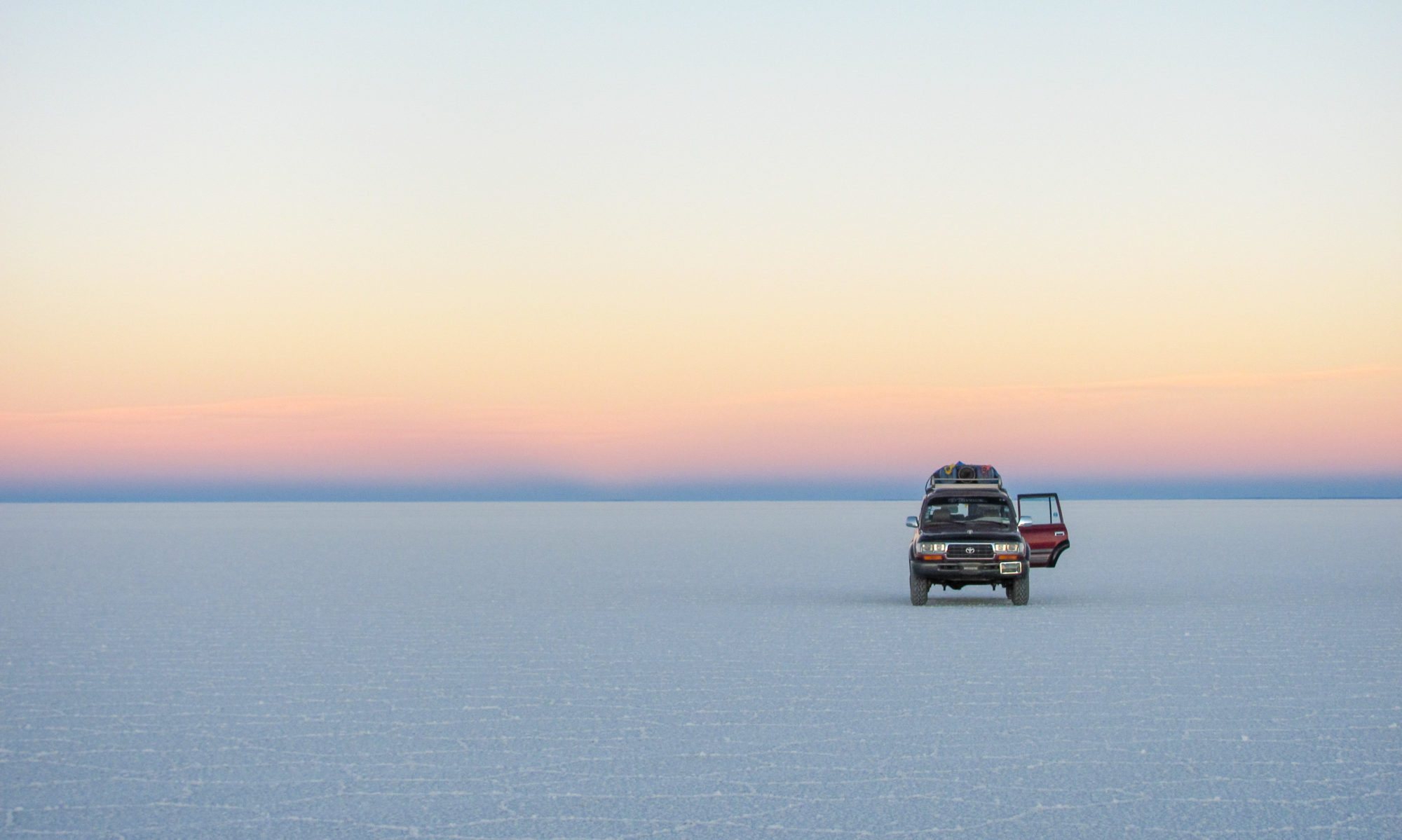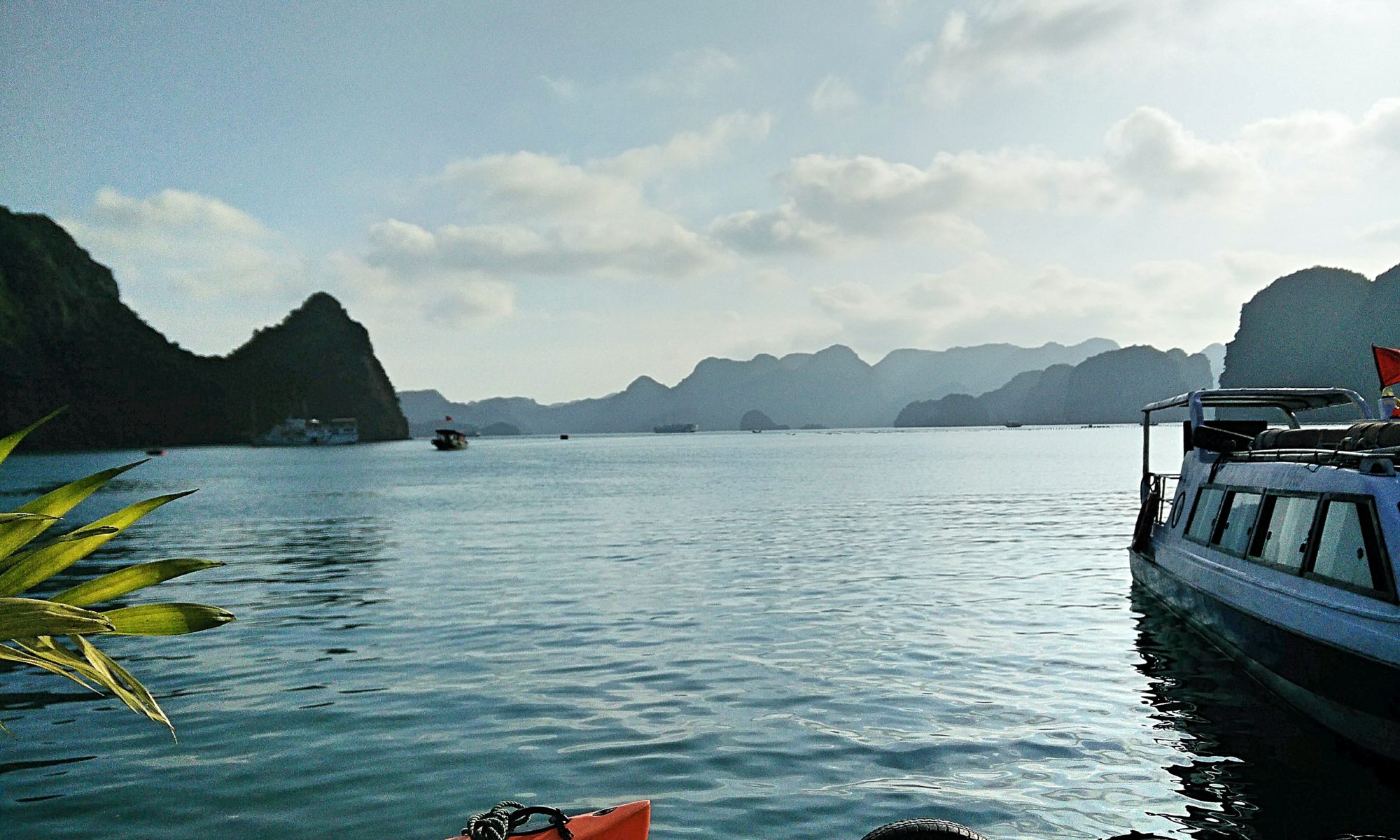So you want to see Vietnam, only have two weeks and worry whether it will be enough. Worry no more! Based on my own travels, I have made the perfect itinerary. It allows you to see the best of the country without feeling rushed or spending way too much money on organized trips or airplane-tickets. Doing all of Vietnam in 2 weeks means making choices on what to visit and what to skip. If you follow this itinerary, you are sure to make the right ones.
– The itinerary –
| Day 1 & 2 | Hanoi |
| Day 3 & 4 | Halong Bay |
| Day 5 | Hue |
| Day 6 | Hai Van pass |
| Day 7 & 8 | Hoi An |
| Day 9 & 10 | Phu Quoc |
| Day 11 & 12 | Mekong Delta |
| Day 13 & 14 | HCMC & the Cu Chi Tunnels |
The ultimate Vietnam itinerary: Vietnam in 2 weeks
Do this Vietnam itinerary from A – Z or in reverse if that is preferred. I’ve written in-depth articles on most destinations included here. Simply click the titles to be taken to those reads.
Since there is a lot to see in Vietnam and two weeks go by way faster than you wish, it makes sense to select hotels beforehand. This saves you the misery of trudging around with a heavy backpack in tropical temperatures, desperately looking for a nice place to stay. Actually booking is not needed, except during the Tet-festival in late February. By not doing so you allow yourself extra flexibility to opt for another choice if the accommodation upon arrival appears to be not at all like all the nice pictures and positive reviews you found online.
Day 1: Hanoi
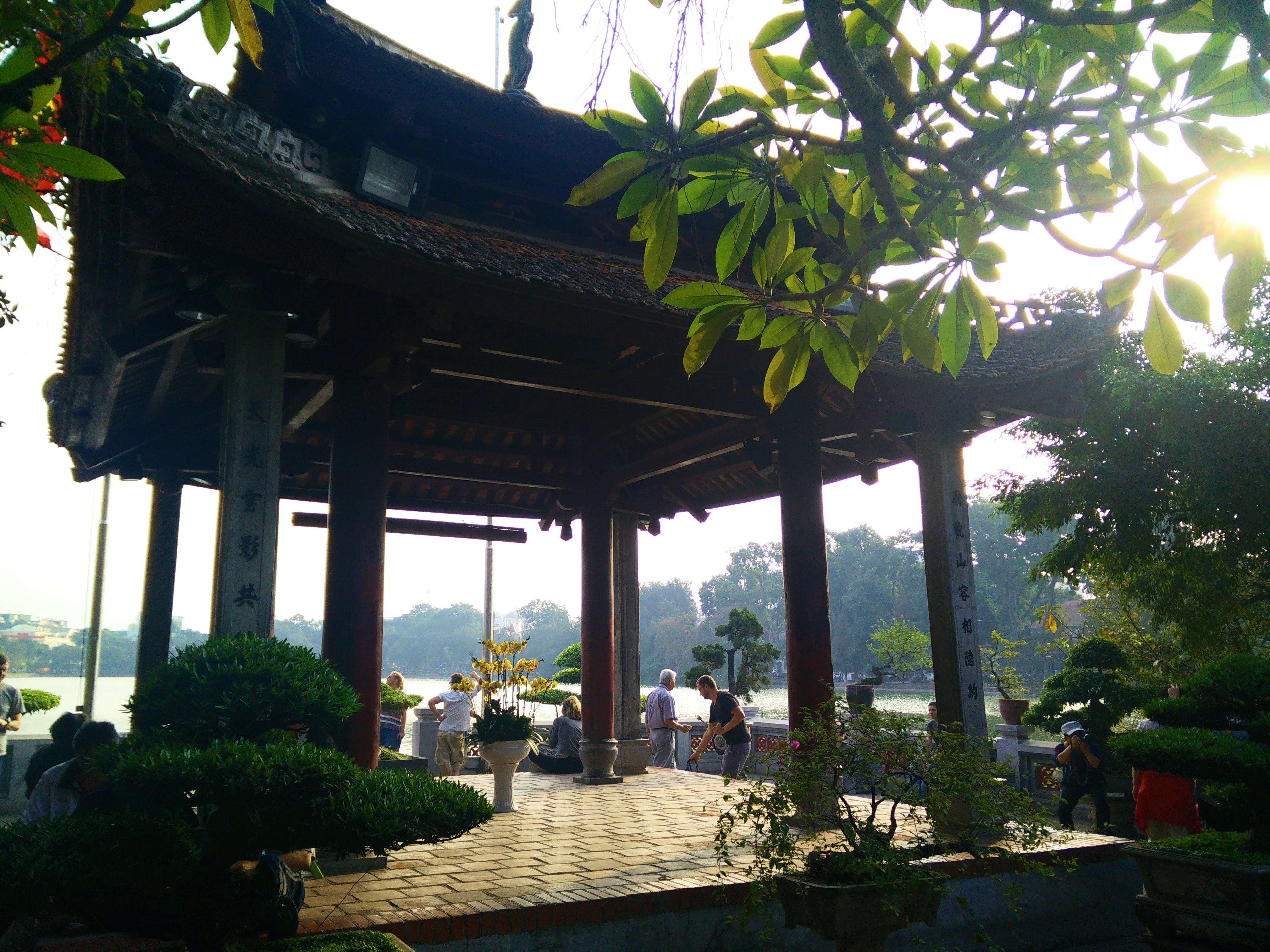
Arrive on the weekend as this is the best time to visit Hanoi. Take the airport shuttle from Noi Bai international airport to the Hoan Kiem lake area. Check into your hotel and freshen up from the flight. Head out to the lake and visit the Ngoc Son temple and the picturesque red bridge. Search for the entrance to Hanoi Coffee time and taste the local delicacy of ‘egg-coffee’. Buy a ticket for the water-puppet show later tonight at the nearby theater and find a nice eatery to settle down for dinner. After dinner go see the water-puppet show. Depending on your jet-lag, either head back to your hotel or use the remainder of the evening to meander around the lake, sampling street food and talking to groups of schoolkids that want to practice their English.
Day 2: Hanoi
After breakfast head over to the Hoa Lo prison to learn about the monstrosities that happened here during the Vietnam war. Go to the St. Joseph Cathedral, have a peak and settle down at one of the many local eateries around this church for an early lunch. Take a cab/moto to the Ho Chi Minh mausoleum and visit Ho Chi Minh’s final resting place. If you are up for more culture, visit the museum that is located next to it. Both close at 16:00 o ‘clock. Head back to the lake area and settle down on a small plastic stool for one of the most important Hanoian traditions: Bia Hoi. This day-fresh beer is brewed without conservatives meaning the keg needs to be finished the same day. This makes the perfect excuse to spend the remainder of your day talking to strangers in helping to finish up the keg;). If you still have energy left, visit the night-market that starts at the north of the lake. Do not expect to be able to haggle the price down much in this part of Vietnam.
Day 3: Halong Bay
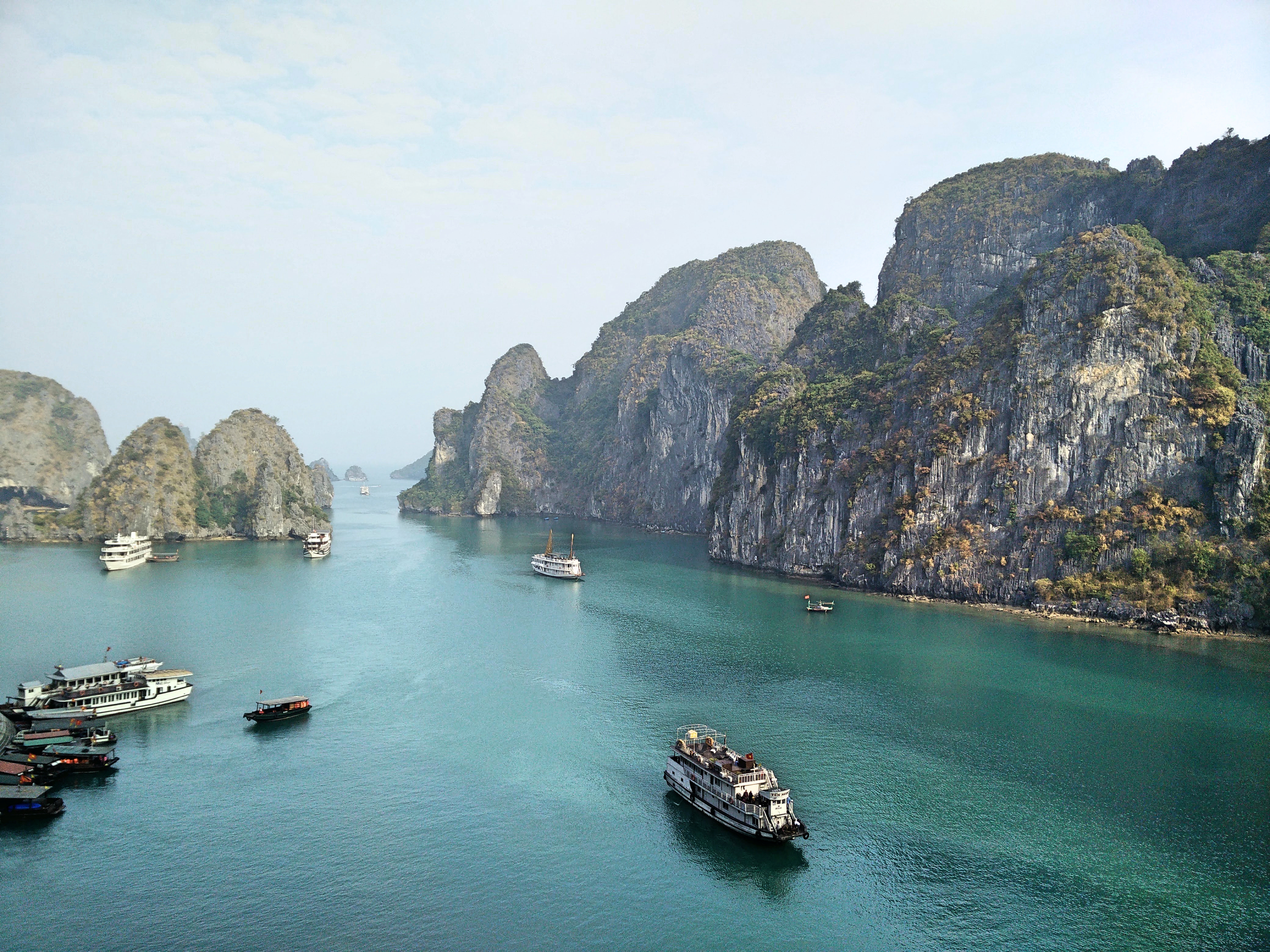
The best way to visit the infamous limestone pinnacles of Halong Bay is to go by organized 2D/1N cruise. For a good cruise and value for money, I recommend Rosa Cruise. You get picked up at your hotel super early and are taken care of for the next two days. I told you this Vietnam itinerary wasn’t rushing? Enjoy kayaking, relaxing on the deck and eating tasty seafood meals in one of the most beautiful surroundings you have ever been.
Day 4: Halong Bay – night train to Hue
After your cruise you will be taken back to Hanoi. You will arrive around 5 PM. Tell the driver to drop you off at the railway station where you take the night train that leaves around 8 PM. After buying a ticket, get a soft-sleeper, you can have dinner in the French Quarter. This part of Hanoi features beautiful architecture and is located right of the railway station) before stocking up on some snacks and water for an adventurous night on the night-train to Hue.
Day 5: Hue
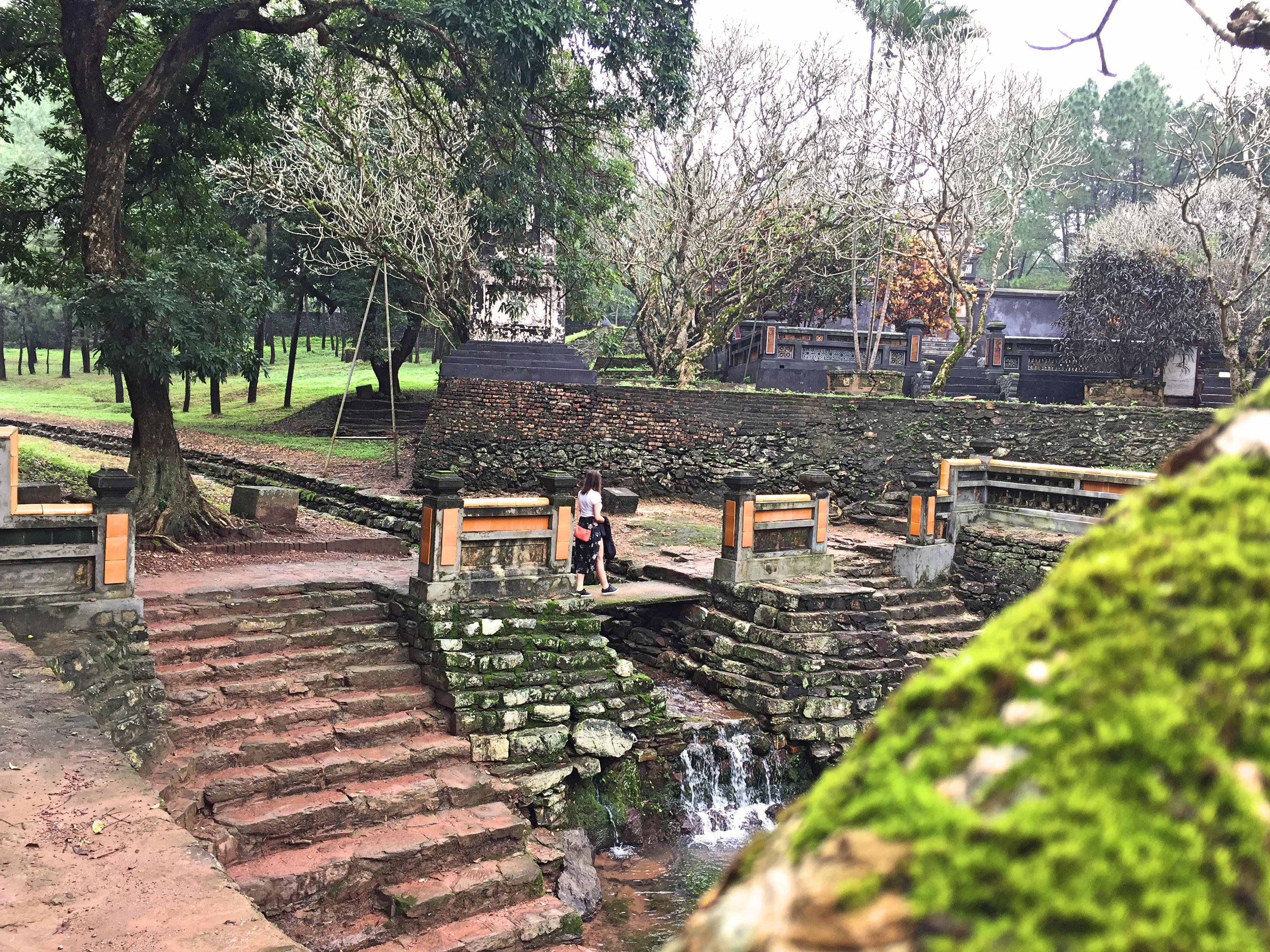
You arrive sometime around 9:30 AM in Hue. Take a moto or taxi to your hotel and drop off your bags. Checking in will probably not be possible yet, but the staff will bring your bags to your room for you. If your up for it, rent a scooter bike and head out to visit the Royal Tombs. Download an offline map to navigate, they are quite easy to find. Alternatively you could use a cab that waits for you at every tomb and brings you to the next. Some also offer explanations at the sights. The cab option is definitely more pricey though.
Afterwards return to the city to have lunch. After lunch you go to visit the Forbidden City and the Thien Mu Pagoda nearby. Have dinner on Le Loi or Pham Ngu Lao and use the rest of the night to relax at your hotel, or have a massage at a spa. Don’t bother with the nightlife in Hue as it is not that great.
Day 6: Hai Van Pass
Today you are going to cruise the magnificent Hai Van Pass! Described by Topgear as one of the most beautiful routes in the world. Rent a scooter from a trusted company, I recommend MotoVina, that brings your big backpack to your next destination for you. You have to carry a day-pack with your valuables as you wind down the roads on your way to Hoi An. Take plenty of breaks at temples and remote beaches, as the total ride is only about 4 or 5 hours. Arrive before dark and check into your hotel. Use the rest of the night to relax at the swimming pool or in a spa. Hoi An has some great, incredible value for money spa-options.
Day 7 & Day 8: Hoi An
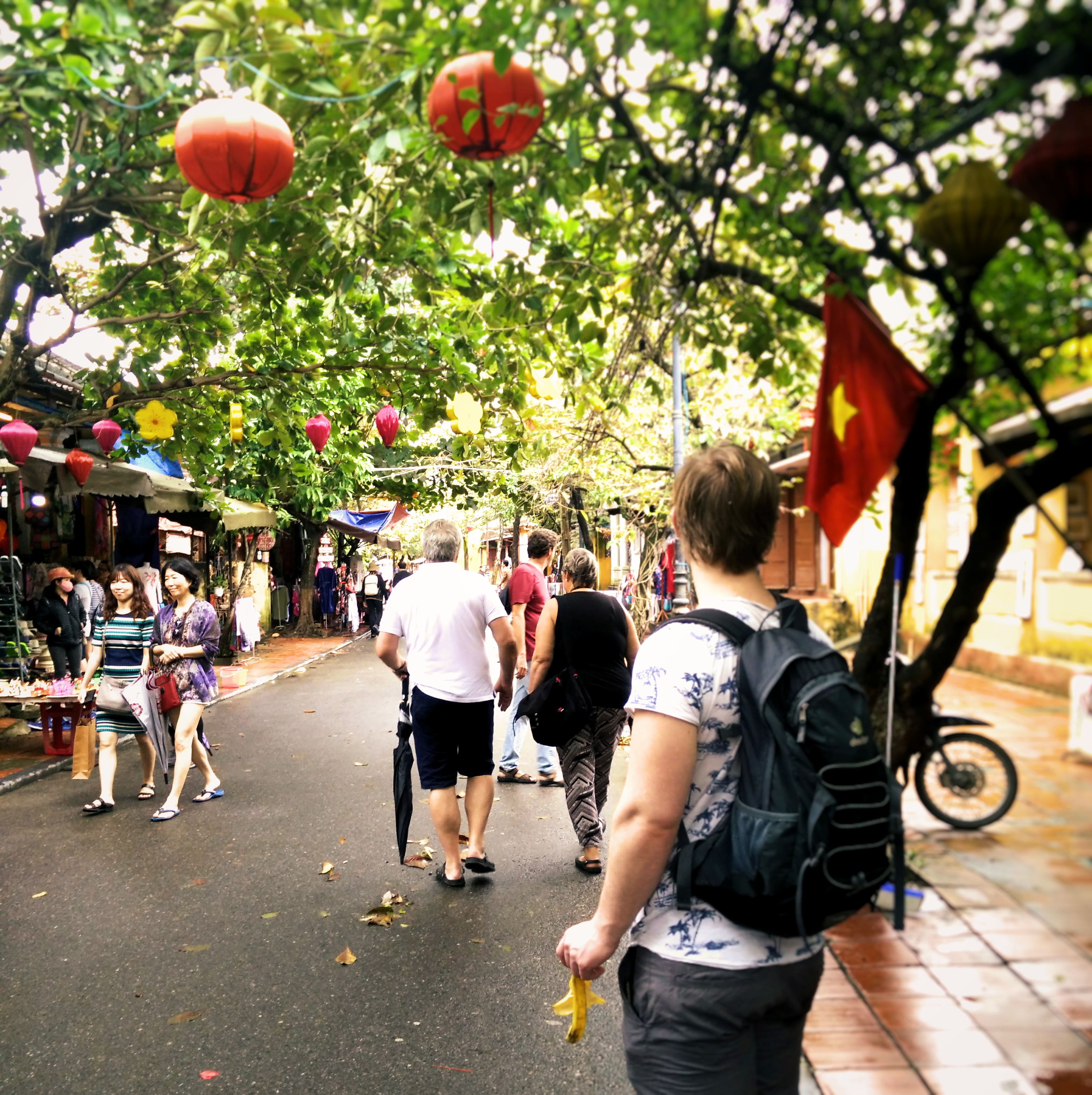
Take two days to explore this little gem at your own pace. If you want to get a suit tailored, this is the place to do so. As Hoi An is pretty small everything can easily be visited on foot. If the weather is great, use a bicycle, most hotels have them for rent, to get to An Bang beach, which is only a few miles away.
Day 9 & 10: Phu Quoc
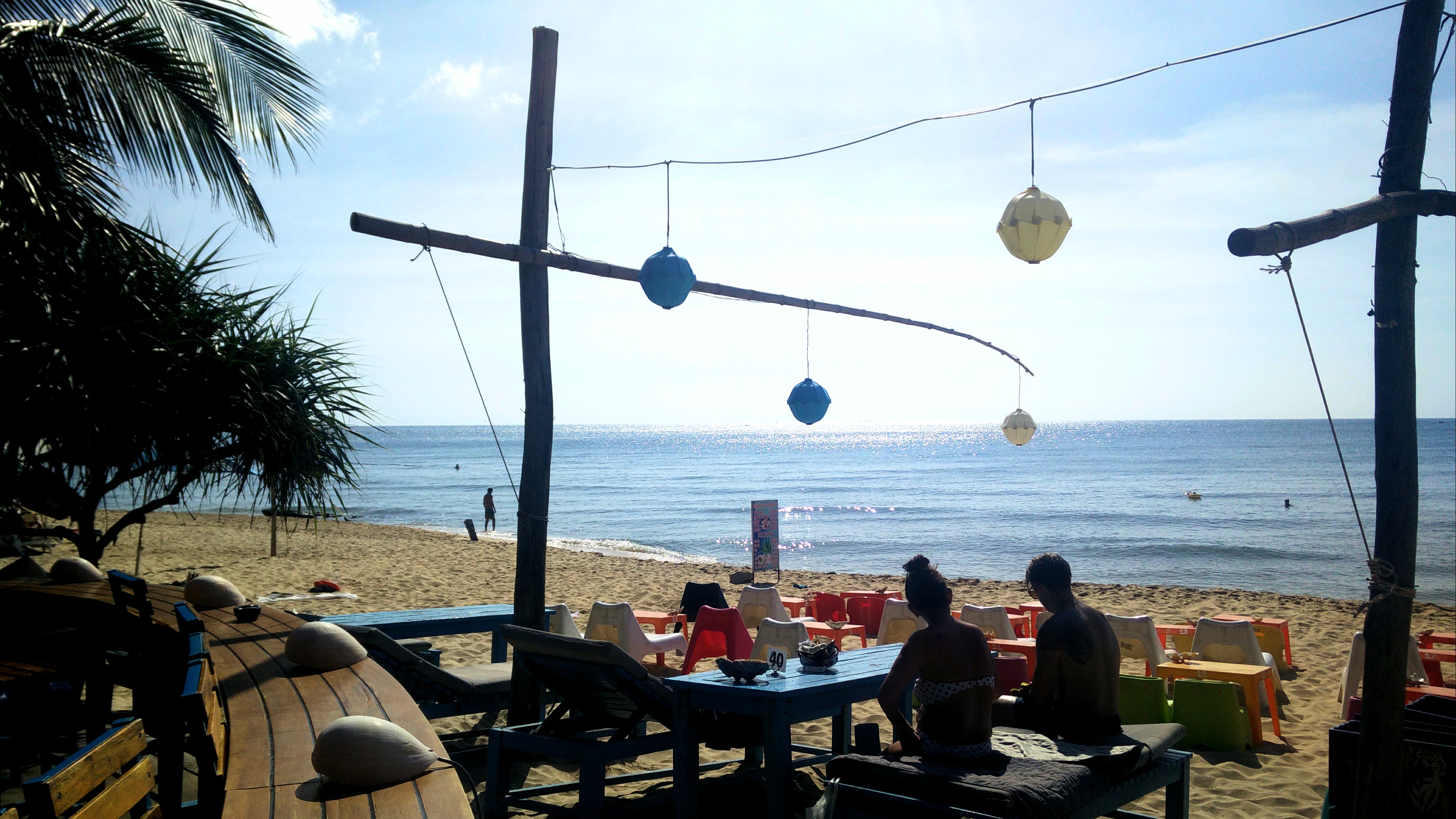
Use the drop-off service of your hotel to get to the airport in Da Nang or get a cab/moto. Take a morning flight to the paradise island of Phu Quoc. Flights can be booked online really easily for about 30 dollars and go 6 times a day. On Phu Quoc, relax, lay on one of its many beaches, have sunset-cocktails at the beach-side bar Rory’s and discover the island by scooter bike.
Day 11: Mekong Delta
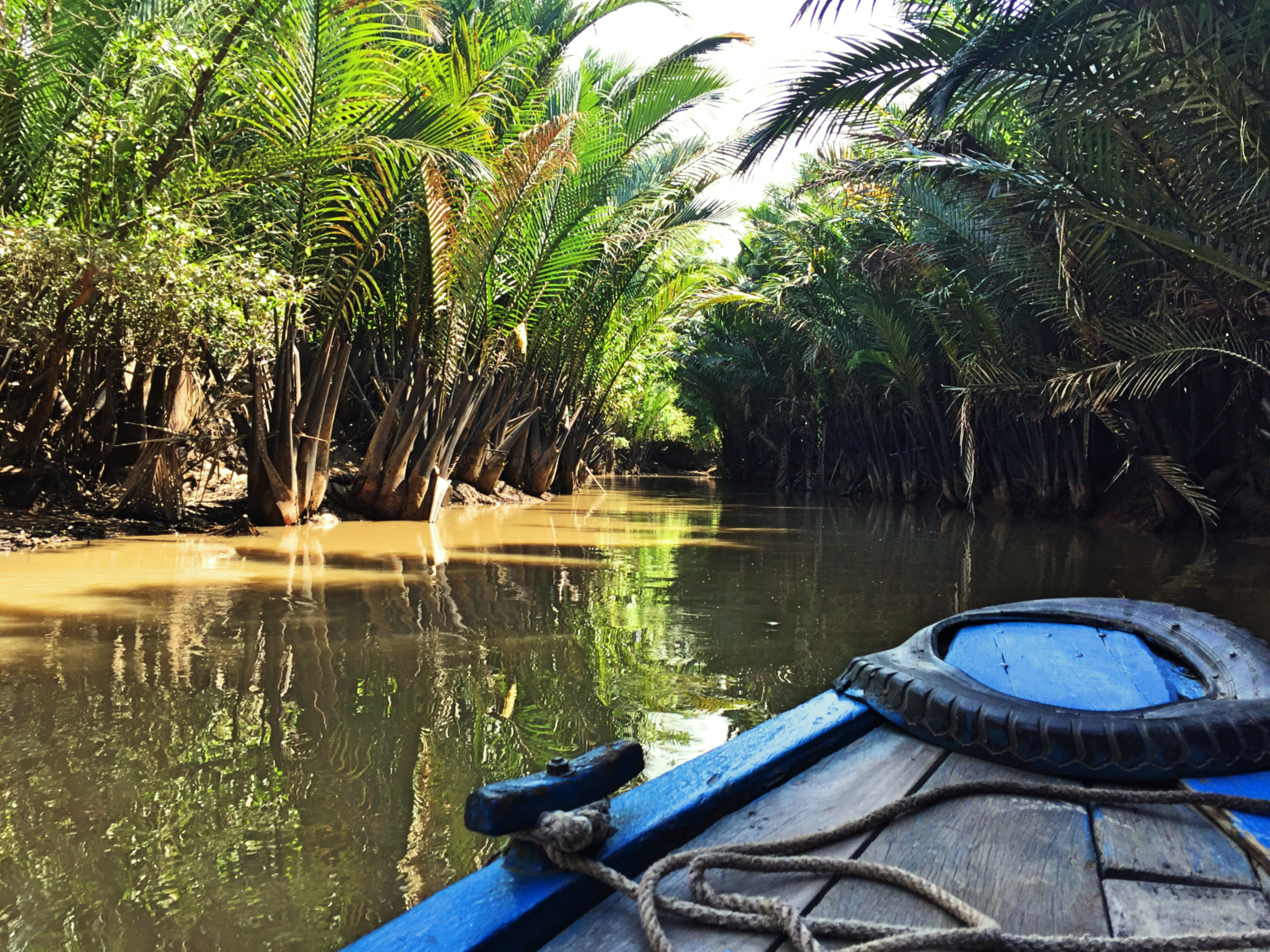
Take the morning fast ferry to Rach Gia which leaves at 8AM and take the bus from here to Can Tho. If all goes well you arrive around lunch time. Use Can Tho as a base to explore the Mekong Delta. After lunch head out and rent a bicycle. The rental company will provide you with a small map and a route but make sure you downloaded an offline map on your cellphone to not get lost. Ride through rice fields, crossing little wooden bridges and find out how people make their living off the mighty Mekong river. Return to the city before night falls and use the evening to discover the rich and bustling night-live of Can Tho!
Day 12: floating market & HCMC
Get up early, 06:00 AM, to visit one of the many floating markets before the big tourist groups arrive. Buy breakfast on the river from one of the many long-tail-boat ‘restaurants’. Experience the chaotic but interesting floating markets at their fullest by haggling for stuff you do not actually need. After returning to Can Tho, go to the bus terminal to catch a coach to HCMC. This costs about 4 USD/ 3.50 EUR and takes about 2-3 hours.
After you arrive head to a hotel in district 1 or the Pham Ngu Lao area. I recommend Giang Son 2. After lunch, head out into district 1 and explore the area by doing a walking-tour. The one described in the Lonely Planet is great!Visit the Post Office, Opera House, Notre Dame, Unification Palace, Ben Treh Market and many more interesting sights. At the end of the afternoon head to one of HCMC’s many rooftop bars to enjoy a cocktail-fueled sunset before finding a nice restaurant to enjoy some fine-dining. This is one of the things HCMC is famous for. After dinner you will probably be exhausted after a long and busy day, so this seems to be all the program you need for the night:).
Day 13: HCMC & the Cu Chi Tunnels
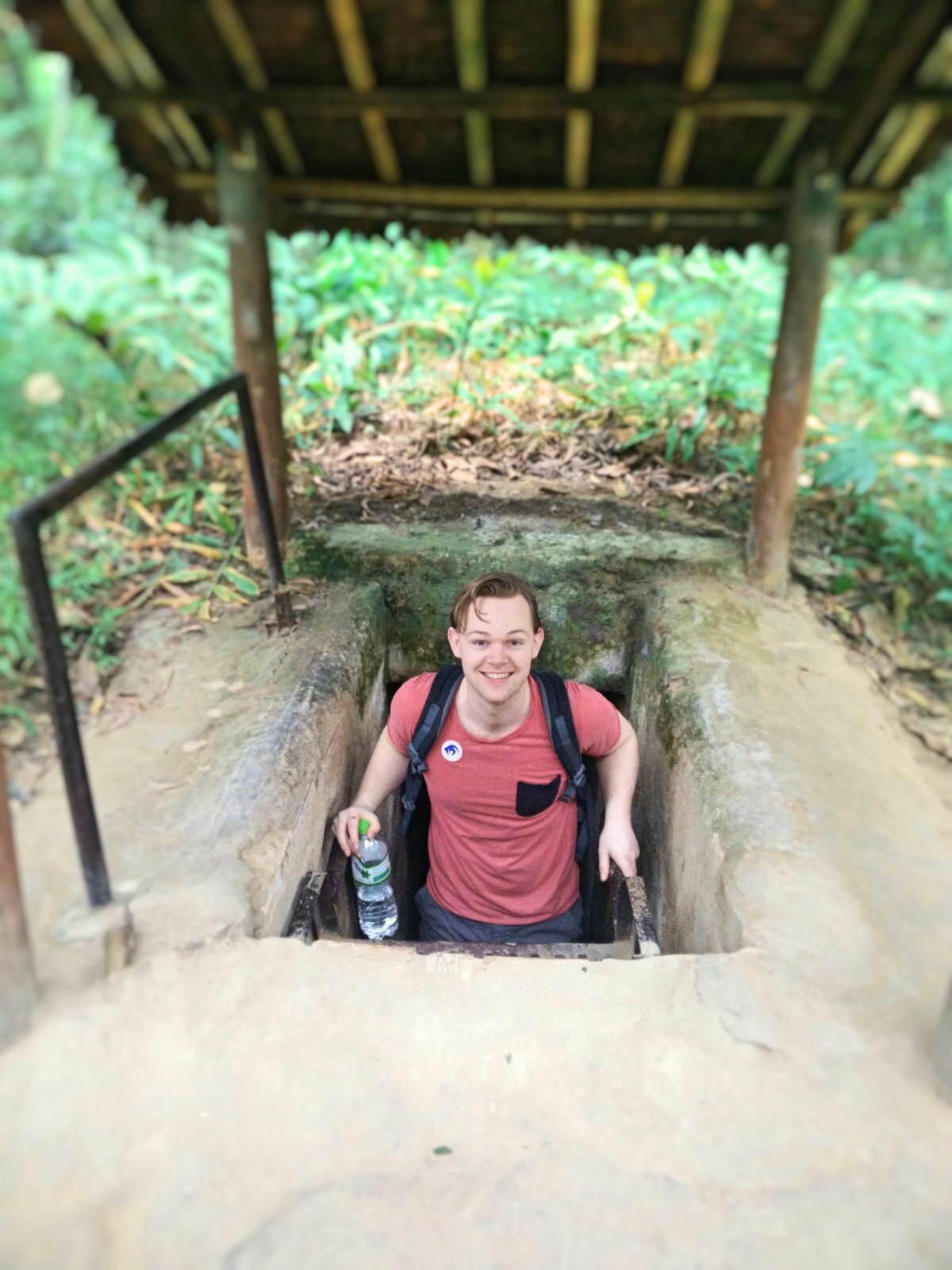
After breakfast head out to the 23/9 bus terminal in District 1 and take bus 13 to Cu Chi. This is the last stop. It will take about 1 – 2 hours depending on traffic. From here you have to take another bus to Ben Duoc. Ben Duoc is one of the visiting sites for the Cu Chi Tunnels.
At the Cu Chi Tunnels you’ll find out how the Vietcong moved around and how terribly small these tunnels are by actually crouching through them. Alternatively you can book a half-day tour but make sure you are taken to Ben Duoc and not the very touristy Ben Dinh. The tunnels at Ben Dinh were created for tourists and were never part of the real tunnel-network.
After the tunnels, head back to HCMC and do some souvenir shopping at Ben Treh. Not the cheapest of markets but definitely the biggest. Find a nice restaurant for dinner. To finish up your Vietnam-trip, head to Broma Not a Bar, which is a relaxed rooftop bar where many backpackers and flash packers gather for excellent tunes and ice-cold beers.
Day 14: HCMC
I recommend keeping this extra day as your last full day in your Vietnam itinerary to allow for delays or a slight detour along your route. Therefore there is no program today. Read my article on HCMC to see what else there is to do.
Day 15: HCMC – home
Getting to Tan Son Nhat international airport is really easy. You take the public bus leaving from 23/9 terminal or the big traffic junction next to Ben Treh market, that takes you there for 20.000D within the hour. Sadly this is the end of the trip. If you stuck to the plan by now you have seen the best of the land of the rising sun all in two weeks, and all without feeling too rushed along the way. And without spending a lot of money on private charters.
Places we skipped on this Vietnam itinerary
There are a few places that are definitely worth the visit but are not included in this Vietnam itinerary. If you have a few extra days it might be a good plan to fit them into the program. Ninh Binh is on route from Hanoi to Hue and hosts the mesmerizingly beautiful Trang An. Sapa is north of Hanoi and offers excellent trekking and endless terraces of rice-paddies. Dalat, between HCMC and Hoi An, offers a colder climate and makes a great outpost for outdoor-activities.
Many people also have Nha Trang on their list. This town however gets swarmed by drunk Russians. It is nothing more than a watering hole for youngsters coming there to party the whole night but lacking the ambiance that many Thai party-islands do have.
– Practical information –
When to go
Vietnam has 3 distinct climates but for all of them the period from end December until early April tend to be good. After that the temperatures rise and a month later the monsoon hits. The rainy season is quite extreme in Central and North Vietnam but in the Southern parts there are still plenty of dry and sunny days to be enjoyed. Low season is the European summer. Expect a lot of rain, but also low rates and small crowds at the top tourist destinations.
Costs of Travelling Vietnam
How much it will cost you will depend entirely on how luxurious you prefer your trip. In most places you will be able to find a dodgy dorm for about 3 – 4 bucks and a meal on a local market will be around one euro/dollar, but if you desire more luxury, plan to spend a little more. Doing Vietnam on a shoestring is possible from about 25 euro a day. If you prefer clean hotels with air-con rooms, want to swap your daily dose of street food for a restaurant now and then and also want to enjoy a relaxing Vietnamese massage at the end of the day, 40 euro a day is more realistic.
In & Out
Both Ho Chi Minh City and Hanoi have an international airport which has direct flights from many big cities in the world. As most countries immediately surrounding Vietnam are smaller and less developed this is also the best and cheapest way to visit if Vietnam is the prime destination of your trip.
– Things to take to Vietnam –
Waterproof Bag
A waterproof bag is a lifesaver when caught in the rain but also when kayaking, jungle-trekking or chasing waterfalls. If nothing else it gives you piece of mind when traveling with camera gear or other stuff that just can’t get wet. Get a 5L or 10L version so you can pack it within your daypack. I recommend this one from Mountain Splash. It’s durable and tough, transparent and it has got an easy handgrip.
Hand Sanitizer
Yes I view anti-bacterial hand sanitizer as essential. Not because I am germophobic but because this will save you from diarrhea and food poisoning. Most people that get sick from eating street food in South-east Asia don’t get sick from the shitty hygiene at the street food stall but because they didn’t probably wash their hands. Use hand sanitizer, stay a happy traveler. This set got handy Carabiners to latch it on you any pack.
3MM climbing rope
Even if your not going to do any climbing or trekking, you need a 3MM climbing rope. Most often you will only use this as a washing line. Or to tie stuff to the outside of your backpack. I for one have never needed to use my rope for anything else than that. However 3MM climbing rope takes up as much space as any washing line. It is nice to know it can also take the full weight of any person when needed.
Lonely Planet
Because its just the best compact travel guide out there. I always take a lonely planet with me for its practical information and background on certain sights. It is a lifesaver for when you find yourself unexpectedly off the beaten path in search of accommodation for the night. For me this is still the best way to read up on a destinations in long haul bus rides. You don’t need internet or battery-life and you can keep it dry in your recently purchased waterproof bag!
